
Buzz Lightyear of Star Command: The Adventure Begins
Examining the man behind the toy...
Despite mounting competition, Pixar is still considered to be the industry’s preeminent animation house. So much so, it’s hard to forget that, once upon a time, CGI (computer graphic imagery) wasn’t the norm in animation; it took a certain stew of creative legendaries to build a company and foment the revolution. Pixar, as founded/purchased by Steve Jobs and led by master visionary John Lasseter, proved animation need not be limited to pencil sketch or brush stroke, but rather, be opened and freed by the computer’s 3-D reach. Notions of “flat” and “static” could be made round and dynamic and increasingly cinematic. The simple line, with an easy swerve of an invisible camera, could become a ladder, a wall, an entire mountain. Indeed, the potential was real. Pixar—through its landmark film Toy Story and succeeding works, had proven the world was round.
But all paradigm shifts come with a cost. From Dreamworks’ Shrek to Fox’s Ice Age, Pixar’s aesthetic experiment soon became the industry standard. Almost immediately, 2-D was made obsolete, the province of a different time…and one reduced to television. It’s in this ironic context, then, that the company’s almost inexplicable Buzz Lightyear of Star Command came into being.
…
Yes. Toy Story, the big-budget movie that essentially killed traditional animation, received a 2-D spinoff for the small, no-frills screen. As the title implies, Buzz Lightyear of Star Command recounts the famous hero’s adventures as a space ranger, combating the evil Emperor Zurg and other comical baddies. He’s joined by three teammates/sidekicks—the beautiful Princess Mira, who can “phase” through solid objects and basically serves as second-in-command; Booster Sinclair, a former janitor who, as a big blimp of an alien, serves as the group’s “heavy”; and XR, a pint-sized robot loaded with an almost Inspector Gadget-level of gizmos. Together, they accept missions and fight a never-ending stream of villains and their minions. If the Toy Story film posited Buzz as a parody to the classic 1940s sci-fi serial, then Star Command is a parody of that parody. It’s all extremely strange. Unnecessary. And honestly, quite entertaining.
At its best, Star Command’s gags bring some strong guffaws—or, at least, some steady smirks—as Buzz encounters one absurd danger after another. The quip-ready XR is especially fun with his wry, running commentary of every ridiculous situation the team encounters. The show is, indeed, an exercise in irreverence…and perhaps, it must be to help distract from its decidedly b-grade aesthetics. Although serviceable, Star Command’s 2-D proceedings can’t match the illustrious luster of its theatrical counterparts. Character models, perhaps inevitably, just seem “off.” Odd. Almost irreconcilable to their glossier, cinematic forms. Lackluster, one might say—an uncanny experience not unlike those muppet comic books that reduced characters of cute cloth and cotton into lanky, bug-eyed, hand-drawn monstrosities.
But the bigger controversy isn’t with the show’s art direction, it’s with the lore. The canon. Despite the cartoon’s relative popularity in its day, the supporting characters have never appeared elsewhere. No mention, no reference, no cameo…of Mira, Booster, or XR in any future Toy Story movie or production. Merchandise for the characters is similarly slim, with Mira relegated to a single McDonald’s Happy Meal release (apparently). Even the Buzz Lightyear’s Space Ranger Spin ride at Disney World has excised any reference to the expanded cast.
Most telling, however, is that the show never received a full DVD release. Nay, it isn’t even available on Disney’s Disney+ streaming service. No one knows why, either; the show is pretty good. But one imagines the 2022 Lightyear film being a prime culprit; it doesn’t jive well with the weird antics of the TV show, and in many ways, outright flouts it. To avoid confusion between the two continuities, it seems Disney is happy to let the cartoon dwindle away as if it never existed.
John Lasseter himself is the other likely reason; if reports are to be believed, he neither liked Buzz’s cartoon spin-off nor its exotic supporting cast. And though the esteemed creative has long left the House of Mouse, it seems Disney remains content with the series’ slow asphyxiation. Like an astronaut gasping behind a cracked mask, Star Command has been tossed out the air lock.
…
Well, mostly. The series’ pilot did get a home-DVD release—a 71-minute movie that would later serve as the show’s opening three episodes. Interestingly, the film begins not with a human Buzz Lightyear patrolling the stars, but with the action figure sitting amongst his fellow movie stars in Andy’s bedroom. Yes, the original cast of toys return for a brief bit of framing—the toybox cast is anxious to watch the just-released Buzz Lightyear of Star Command: The Adventure Begins on VHS cassette! It’s a very meta introduction that seems to scream, if nothing else, that the series is indeed meant to be canon. Meant to be taken seriously; meant, at least, to be remembered. And yet, beyond this one time, Star Command and the traditional Toy Story line never intersect again.
Which might be just as well, considering the 2-D movie that follows makes for an iffy juxtaposition against that sublime 3-D sheen. As stated already, Star Command is not a “pretty” cartoon; conceived during a time more influenced by the likes of Johnny Bravo, The Powerpuff Girls, and Disney’s own Recess…the show lacks the polish and pizazz it might have gained with the anime boom a few years later. If the CG aesthetic enthralled fans on the big screen, the hand-drawn art feels rather underwhelming on TV. Characters are exaggerated, their proportions slightly oblong and wrong…a look that robs them of that warm “Pixar” veneer.
The writing is also very different. The story opens with Buzz and his partner, Warp Darkmatter, searching for three L.G.M.s (Little Green Men) on a forsaken planetoid, only to stumble upon the evil Emperor Zurg. A battle ensues, an explosion occurs, and of the two rangers, only one escapes. A distraught Buzz survives…but swears he’ll never take another partner.
Of course, Buzz is eventually convinced otherwise. Over the course of the tale, he’s joined by three would-be replacements—Mira, Booster, and XR—who all provide their unique talents and humorous quirks. It’s here where the film really comes alive; between Buzz and Mira’s mixture of rivalry and abject admiration, between XR’s shenanigans and Booster’s child-like naivety, Star Command becomes a clever ensemble of talent. It’s not really about Buzz. It’s about the team.
This four-way dynamic would be better explored in the show’s succeeding 62 episodes; the movie is barely an introduction, a hint, of what would come. And considering this is the series’ only official release, that’s unfortunate. Later episodes would revel in subverting tropes or satirizing an array of contemporary targets. One episode, for instance, has Buzz brainwashed into being a corporate paper pusher, while another sees Team Lightyear crash land on a planet called Roswell—who are the real aliens, indeed?
The talented voice cast should also be noted; for the film, Tim Allen reprises his role as Buzz. But for the TV show, Patrick Warburton provides his own iconic voice, even redubbing Allen’s lines for the movie’s edited, televised version. Warburton’s more zealous portrayal makes Allen’s seem rather subdued by comparison, but somehow, it works…better complementing the show’s already manic themes. Again, it’s a shame these latter episodes have yet to see release, as Warburton’s exaggerated inflections make for a good contrast against Allen’s more grounded, sobering tones. Buzz’s teammates are likewise spicy, with XR’s synthy sarcasm being the silicon cherry on some delicious laughs.
All of this, really, is to say that Buzz Lightyear of Star Command: The Adventure Begins is a good start, but the following TV series is where the concept truly proves itself. And yet, Disney remains almost proudly ambivalent to this Buzz and his other “family,” that gaggle of rangers of crazy persuasions that made for a surprisingly entertaining, snarky production. This is a side—a brand—of Buzz Lightyear that exists nowhere else...perhaps forevermore.
To infinity and beyond, indeed.--D

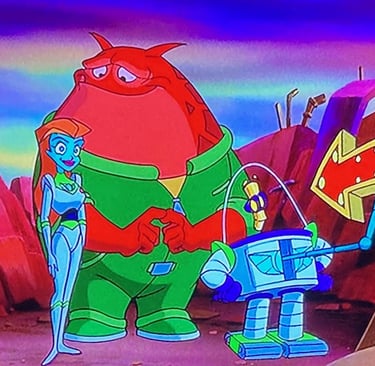

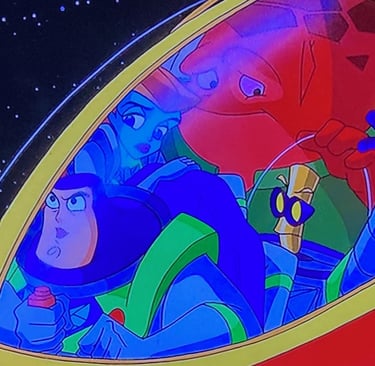

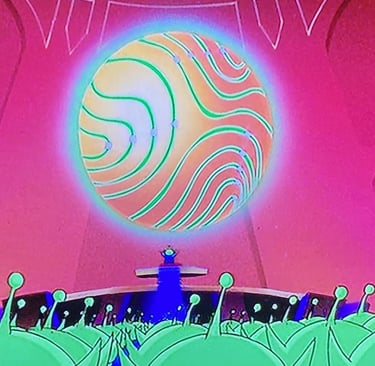
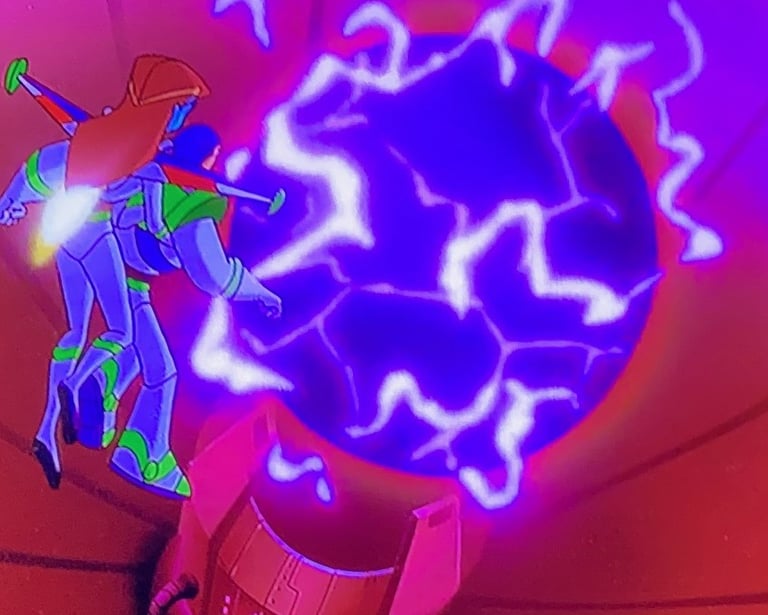


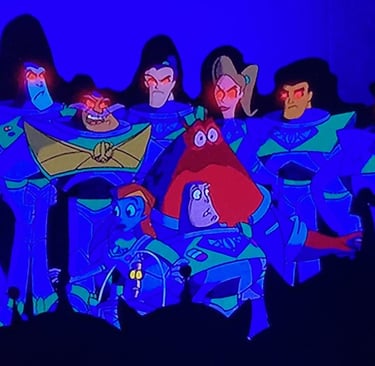
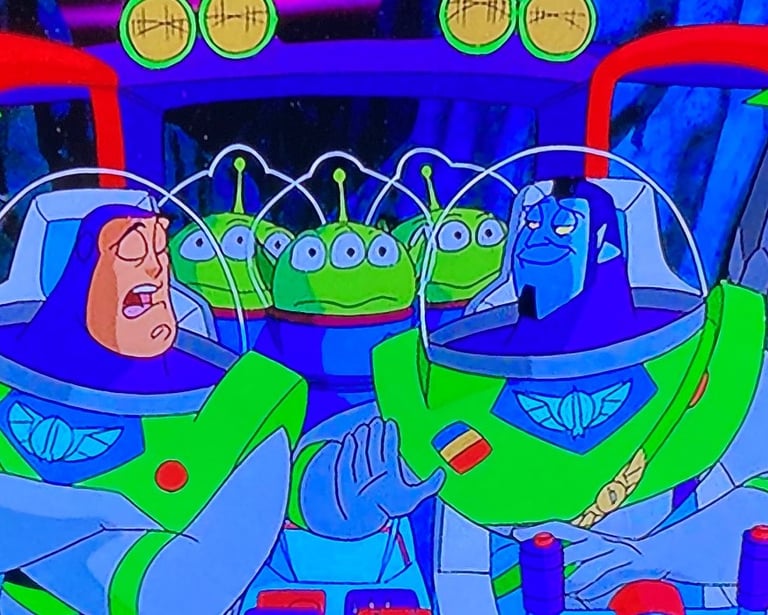

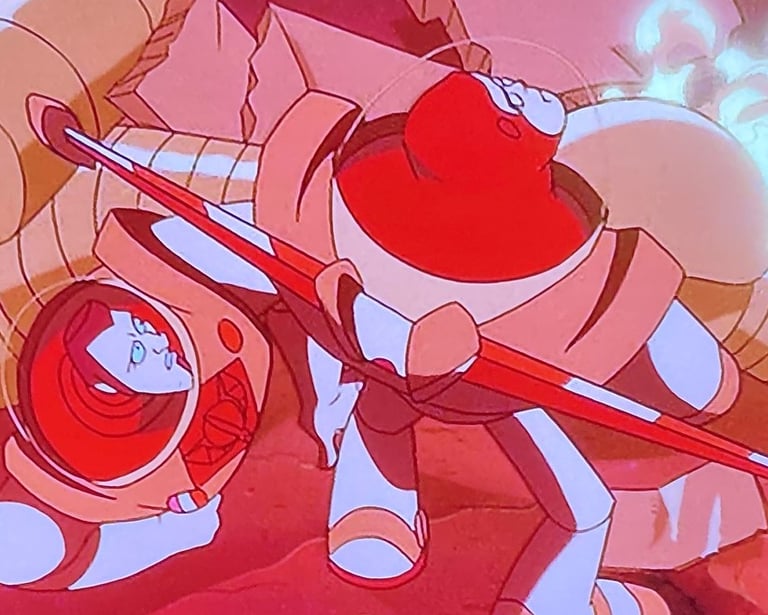



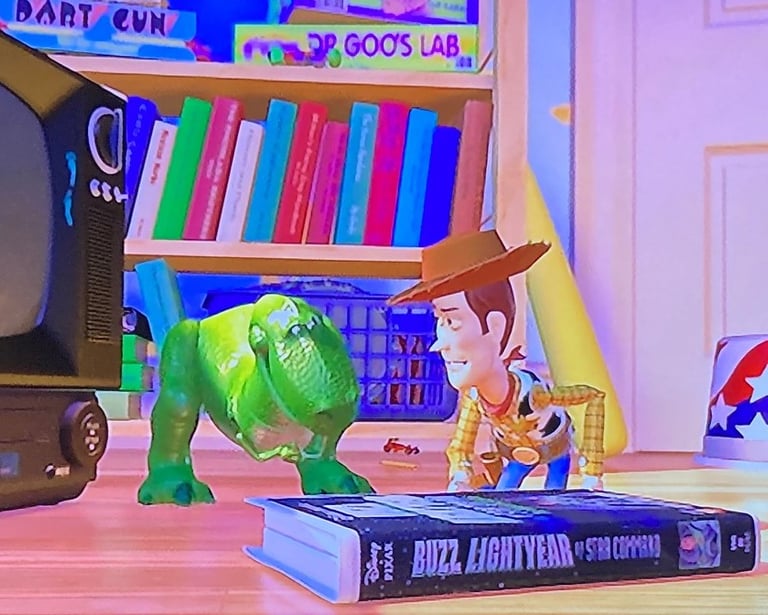



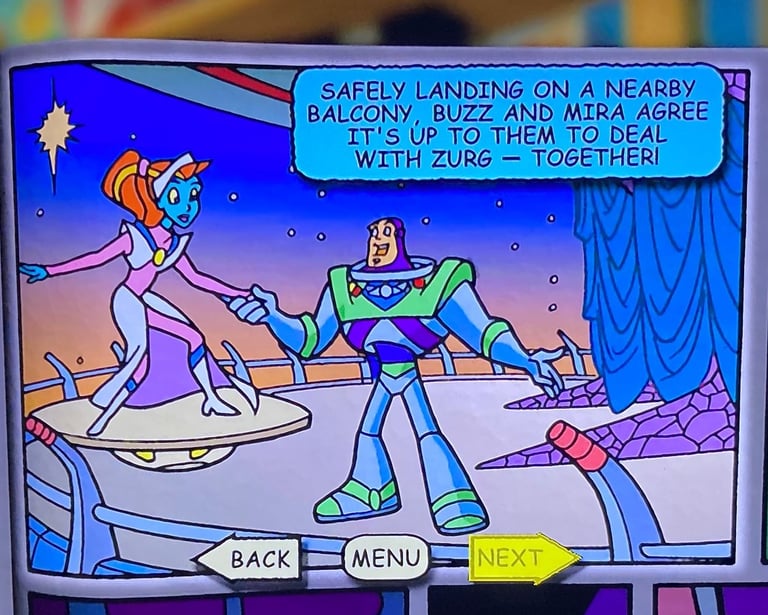

The movie is preceded by a quick framing device: Woody and the gang are all about to watch Buzz's latest VHS release!
Zurg's evil plan is to hijack the LGM's uni-mind, turning it into a veritable hivemind in which he can control every living soul with his deranged ambitions.
Buzz's partner, Warp Darkmatter, gets removed from the equation early in the story...at least, seemingly. Poor Buzz must deliver his eulogy...and swears never to take a partner again.
The DVD comes with a digital comic book which provides an origin for Princess Mira. Indeed, she's quite the woman.
Buzz's team...at their best, and not so best.


Although the artwork can't quite compete with big-budget CG, at times, there is a certain flourish and snazz of style.

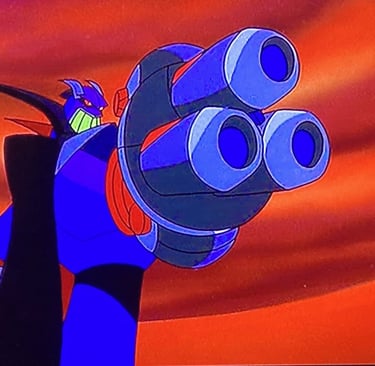

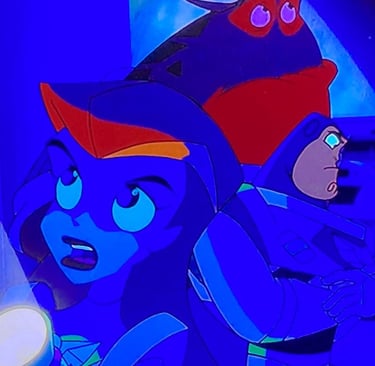
The lighting, here, is especially impressive.
Contact: lostnostalgiaproductions@gmail.com
Website: www.lostnostalgia.com
Like what we're doing? Please consider throwing us a dollar into our Patreon page's tip jar!


